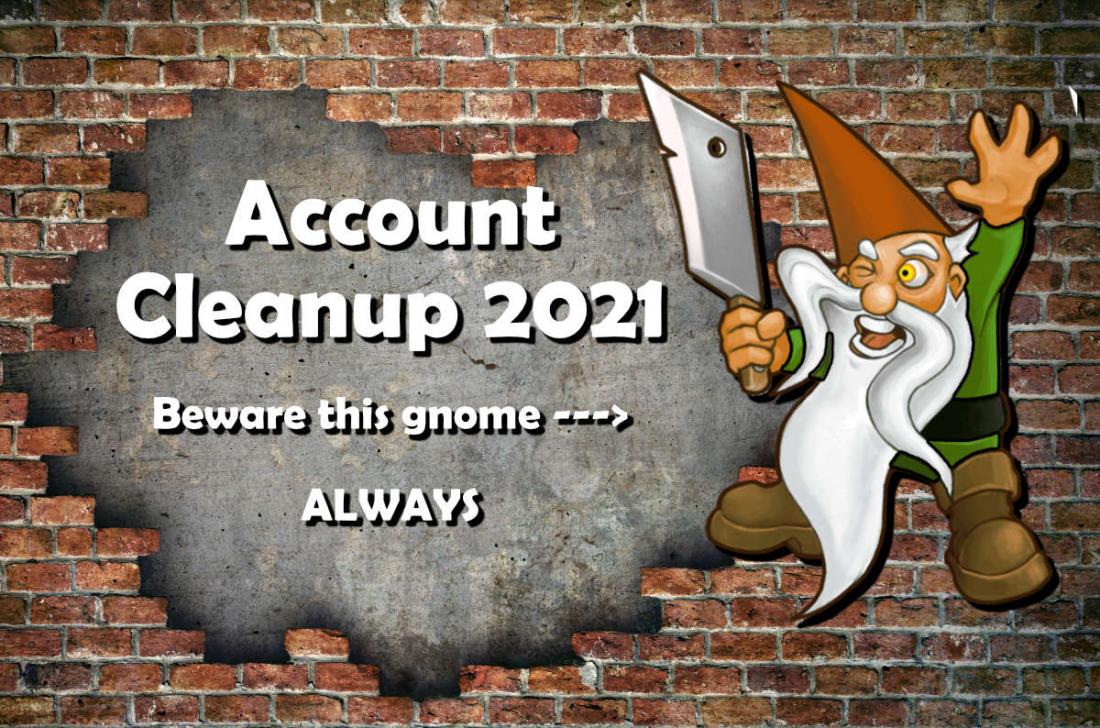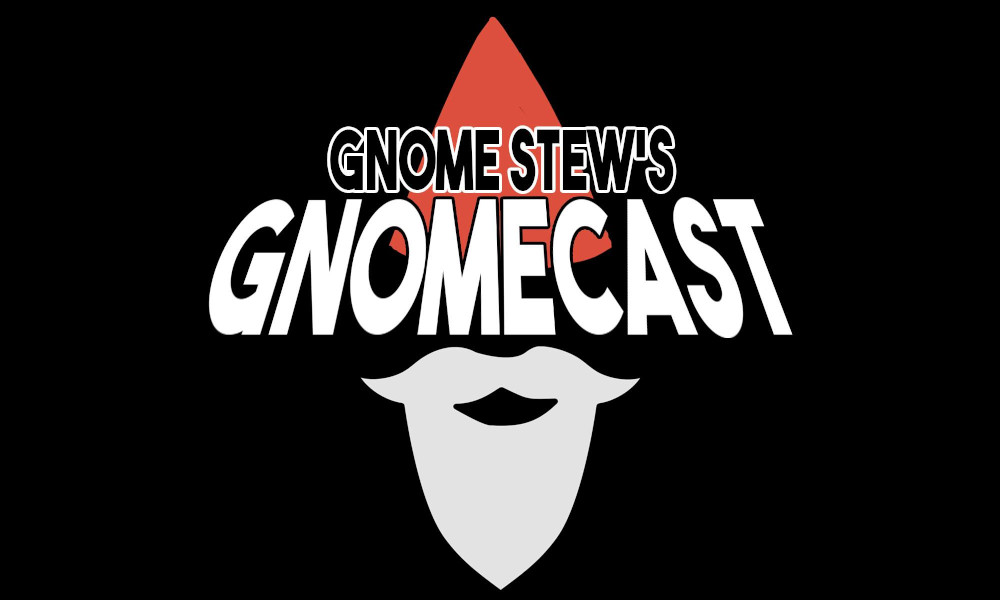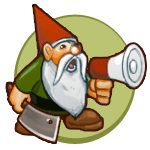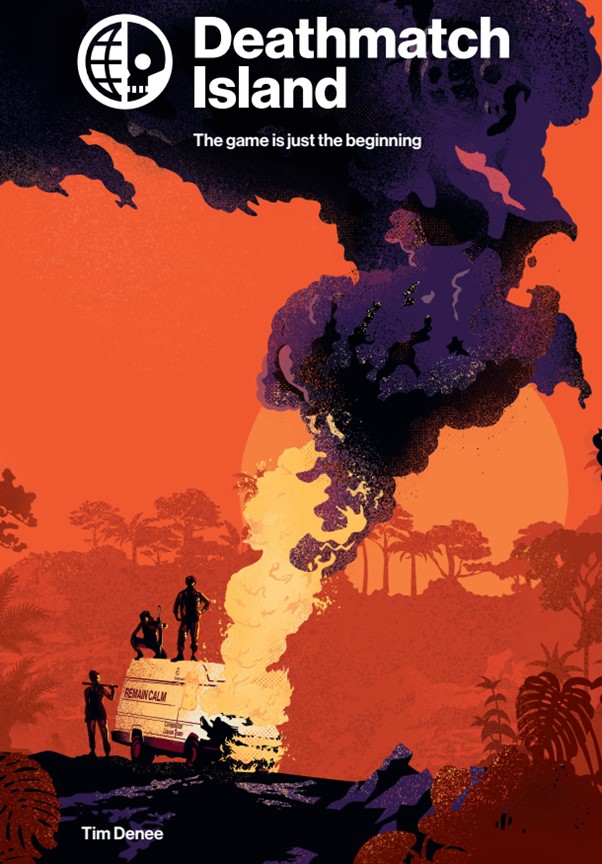
Ever have a rough morning and not remember where you are? No judgement, just curious. But, what about if you don’t remember where you are, and there seems to be a set of branded clothes sitting on a table across from you? What happens when you wake up with a weird device on your wrist, monitoring how many followers you have?
Can you imagine how terrible it would be to be trapped in a place where you don’t know anyone, you don’t know if anyone is acting in good faith, and everyone is obsessed with followers? I’m so glad stuff like this only happens in games. It would be a nightmare if something like that became commonplace and even started to affect life outside of that strange, disconnected environment.
And on that note, let’s take a look at Deathmatch Island, a new game published by Evil Hat, in association with Old Dog Games.
Disclaimer
I received my copy of Deathmatch Island from backing the crowdfunding campaign. I haven’t had the opportunity to play in or run the game, but the game is based on the Paragon System, the same underlying system originally created for Agon. I ran Agon both as an ongoing part of my gaming group’s schedule, and at conventions.
Deathmatch IslandGame Design, Writing, Graphic Design, Layout, And Illustration Tim Denee
Editor Karen Twelves
Indexer Sadie Neat
Cultural Consultant James Mendez Hodes
System Consultants John Harper and Sean Nittner
Development Consultant Greg Soper
Business Manager Chris Hanrahan
VTT Developer Sophie Lagacé
Marketing Manager Tom Lommel
Project Manager Sean Nittner
Product Developer Fred Hicks
 The Staging Grounds
The Staging Grounds
This review is based on the PDF of Deathmatch Island. The PDF is 218 pages long. This includes a title page, a publication page, a credits page, a table of contents, a four-page index, a two-page competitor sheet, a two-page game tracking sheet, and two pages of rules summaries. The document is dominated by orange, white, and black, matching the colors designated for the organization present in the game.
The layout is the same bold, simple, but attractive layout that many Evil Hat projects have. Most pages have a single column layout, but there are a few two column pages, tables, and charts in the book. There are a number of simulated documents, as well as images of items from the competition, like branded flashbang grenades and competitor uniforms.
Production Meetings
Deathmatch Island is meant to emulate media where people compete in unconscionably dangerous games for the amusement of others. It channels the feel of media like The Running Man, The Condemned, The Hunger Games, The Hunt, Battle Royale, and Squid Games. In addition, it folds in some “stranded on a mysterious island/trapped in a mysterious facility” tropes from shows like The Prisoner and Lost.
Contestants wake up on the island, with no idea how they got there. A mysterious figure from Production encourages the players to give their all, while they are shipped off to different islands with fewer and fewer surviving the competitions there. Challenges can grant valuable resources to the competitors, and some may even reveal secrets about the competition and those who run it, but at the end of the day, it’s all about the deathmatch.
The general story of the RPG is simple. Survive, find out something about the mysterious organization, and decide if you are going to work together, or face off against the other players in the game. The texture of the game comes from the details. There are other detailed NPC competitors, a variety of resources to gather, some specific events that can be slotted into different phases of the game, and some mind boggling clues to the nature of the company, which may point people to secret government agencies, massive criminal organizations, secretive labs doing unethical experiments, and maybe even the presence of aliens.
 The Backstage Area
The Backstage Area
While there are some differences, if you have played Agon, you’ll get the general structure of the game. If you haven’t played Agon, let’s talk about the basics.
Characters have die ratings detailing multiple aspects of their character. Characters will have a die for name (how popular you are, hence, how much weight your name has), occupation (what you did before you woke up here), and five additional capabilities, all ranking how well the contestant interacts with different stages of the game. These capabilities are:
- Social Game–communicating and negotiating with others
- Snake Mode–performing underhanded actions to succeed
- Challenge Beast–overcoming physical challenges against the environment
- Deathmatch–fighting for your life
- Redacted–finding out things that the organization doesn’t want you to know
You’re always going to be using your name die, because you’re putting your followers and popularity on the line. When you attempt a challenge, if your occupation seems relevant, you can add that to your roll as well. You use one die from your capabilities from the one that makes the most sense for the challenge. If you have Trust with another character (a currency that can be spent), if they are in the same contest that you are, you can spend Trust to add their name die to your pool, and you can spend Trust to avoid harm, representing your ally coming to your aid exactly when you need them.
In addition to these dice, you can mark Acquisition to use relevant items to help you. If you find something relevant and useful to what you are doing, outside of your normal gear, you can also add an Advantage die to your pool. So, your pool is going to look like this:
- Name
- Occupation (if applicable)
- Relevant Capability
- Advantage (if available)
- Trust (if you want to spend it and you have that competitor in the same contest)
- Second Capability (if you mark fatigue to use some out of the box thinking)
- Acquisition (if available)
To determine if you succeeded, you add two dice from your pool together, except for your Acquisition, which if present, adds to the two dice you picked. NPC competitors or challenges will have their own dice ratings, which will add a set difficulty bonus based on what island you are on, and how dangerous the island and the challenges are.
In Agon, the “parent” to Deathmatch Island, challenges are addressed as if you are narrating an epic poem. Players announce their character by name, stating who they are and what they intend to do. In Deathmatch Island, you introduce characters the way a commentator might on a sports program, and after you determine what happens by rolling the dice, each player goes into a confessional where they talk to the camera and explain exactly what happened and how, in whatever details they want to add, so long as it matches what the dice determined.
That means that, like Agon, a lot of the roleplaying is a zoomed out, third person narration of what the character is doing, with most of the “in person” roleplaying happening in the confessional, and during the trust building and theory crafting that the PCs do between islands.
Characters have Fatigue and Injuries. Failing a task normally costs you Fatigue, and you can spend it as a resource in some instances. If you don’t have Fatigue to mark when you fail, you take an Injury. If you are out of injuries, your character has met their demise. Injuries don’t clear during a season, but you will remove some Fatigue between islands.
As you meet challenges, you gain followers, and when you hit certain milestones, you can advance your characters, picking from the advancements shown at the bottom of the character sheet. Advancements are also gained by accumulating Injuries, but that’s a risky way to improve your capabilities.
The Call Sheet
Another thing you will know if you have played Agon is that there is a specific procedure to play. You tell your story within the structure. Characters arrive on the island, and they will participate in a number of contests. This is Phase One. These challenges happen at different nodes on the island, and some islands and situations may cause the PCs to head to different nodes. Prevailing at some of these challenges may get the PCs an Advantage die due to a situation moving in a favorable direction for the PCs.
They may also find some Acquisitions, the currency you use to add specialized gear to your rolls. While the actual Acquisition isn’t detailed (i.e. you may not find a specific weapon or a specific piece of gear), Acquisition is divided between weapons, equipment, and Redacted. You may have a hard time justifying using survival gear in a Deathmatch, and you can only use Redacted Acquisitions when you are using Redacted to do things “off book” to gather secrets from the organization.
There are also additional traits that a contest may have, including the following:
- Dangerous–you mark Injury instead of Fatigue if you fail
- Exhausting–you spend 1 Fatigue to enter the challenge due to effort
- Restricted–you can only use Redacted Acquisitions
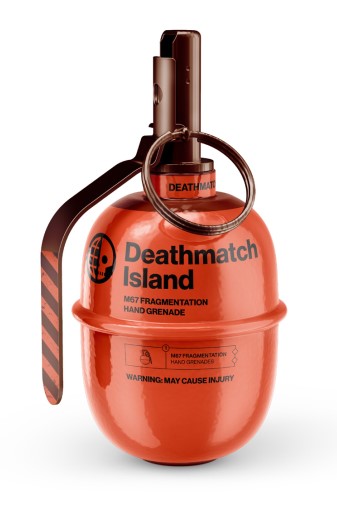 If you use Acquisition to add a weapon to your pool, the contest automatically becomes Dangerous, because you escalated the situation. On the other hand, any challenge that is a Deathmatch is automatically Dangerous.
If you use Acquisition to add a weapon to your pool, the contest automatically becomes Dangerous, because you escalated the situation. On the other hand, any challenge that is a Deathmatch is automatically Dangerous.
Phase Two is the climax of the island, where everyone must participate. This is the big event that all the followers are . . . following? Phase Two has its own smaller sections, Scouting, Scramble, and Battle Royale. Scouting lets you engage potential threats that will happen if you don’t address them. The Scramble is a challenge that gives one competitor an Advantage to use in the Deathmatch. If the PCs don’t mark their last Injury, they survive, but some competitors won’t make it to the next island.
Between islands, characters debrief, which is where you find out which NPCs survived and what else happened on the island. After the debrief is Theory Crafting. Theory Crafting is where the PCs get together and talk about the clues they have learned from Redacted activities. It’s worth noting that there isn’t one “truth” about what’s going on, and as the PCs start to come up with in Theory Crafting is probably what you should lean into as the “truth.” The theories are all grouped into broad categories, which are Political Project, Entertainment, Big Experiment, or Weird. The PCs can also build trust with other PCs by sharing flashbacks they have about parts of their life that they couldn’t remember, that are now becoming clear again.
There are three islands to a season, and each island has a larger bonus added to the dice of the individual challenges, representing the increased threat of each location. Island Three has its own quirks, because it’s the end of the season, and everything has to come to a head. By default, players secretly select if they are going to try to break the game or play to win. If anyone is playing to win, and the other PCs are breaking the game, that character gets an Advantage on the others, because they’re betraying the team they’ve been with the whole time.
Endgame
If someone playing to win makes it to the end, and kills the last (PC) competitor, there are a few questions to answer about what happens next. This is probably some version of you blacking out and waking up back in your normal life, before or after getting to celebrate your win.
If the characters breaking the game survive and there are no PCs playing to win, they still have to fight their way through the remaining competitors. If they win the Battle Royale, they get to pick from a list of damage they can do to the organization, like getting evidence, killing operatives, or blowing up something important looking.
While the islands all have the same procedure, there are different casts that you can apply as a template over the island. This gives you some specific encounters native to that cast, some specific NPCs, and a thematic set of things weaving in and out of the NPCs and their encounters. There are also some questions to answer about the motivations of the cast members you choose, to help determine how they will act.
The game has a range of ways that you can set it up. Your PCs can all have randomly determined aspects, including your motivation, which by default you don’t share, but which you can share if you are playing New Game+, or if you just want to cut down on the potential player versus player activity. You can start with New Game+ if you just want to play characters that know about the game and the organization, and you want to go straight to tearing it down.
Champion For Life The game does a great job of using the structure of Agon and framing a different narrative that uses the same toolkit.
The resolution for this game is simple and intuitive, and while the procedures can look intimidating, there are several places where the process is spelled out in flowchart-like references. There are some delightfully weird Redacted secrets to find out when poking around the island, and some subtle humor tucked into the details. The game does a great job of using the structure of Agon and framing a different narrative that uses the same toolkit.
It was Purgatory
While it is completely intentional, the default mode that allows for player versus player resolution may turn off some players not interested in the potential for that kind of play, even with the optional rules for calibrating those aspects. For some players, it may be less intuitive to switch between narrative roleplaying and in-character roleplaying. It may be daunting, knowing that different phases of the game inform which approach is most appropriate. That’s not so much a flaw as it is a consequence of a game with a very specific personality, which this game shares with its forebear, Agon.
Qualified Recommendation–A product with lots of positive aspects, but buyers may want to understand the context of the product and what it contains before moving it ahead of other purchases.
Any caution that I express about picking up this game isn’t because the game does anything that it doesn’t intend to do, and it’s certainly not because it misses the mark on the narrative it presents. If you are a player that doesn’t mind structured roleplaying games where you do specific things in different phases, and you like weaving in and out of being in the “writers room” and being “on set” as an actor, this is still going to be a pretty safe bet, so long as the genre itself appeals to you.




